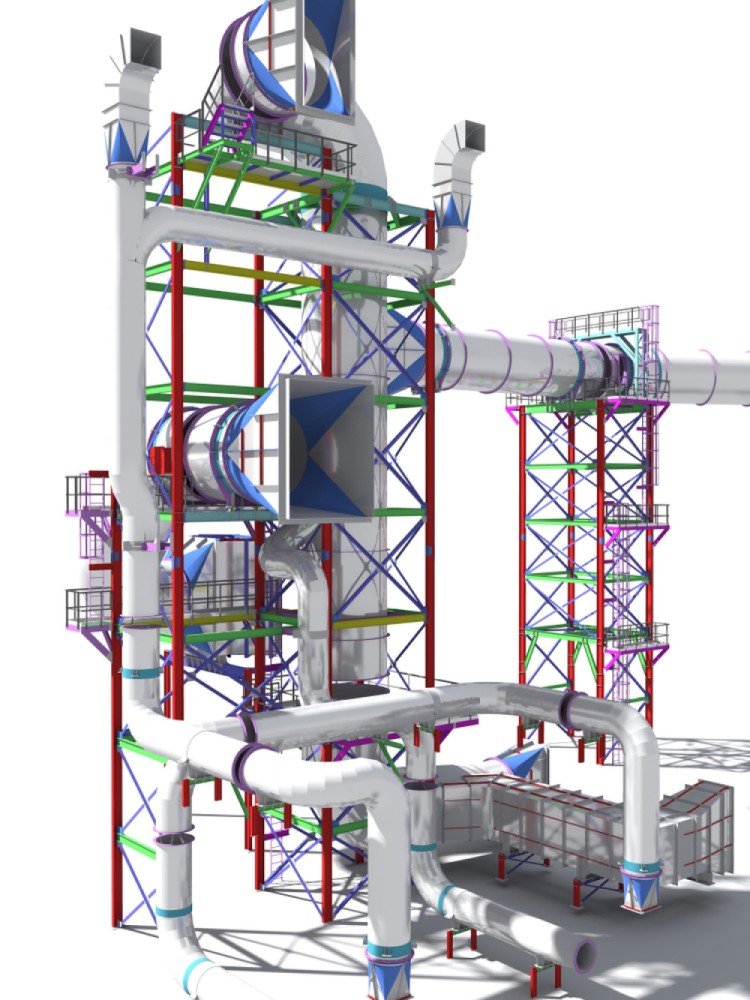



In the realm of construction, Building Information Modeling (BIM) has revolutionized the way we conceptualize, design, and construct built environments. Cost management, an integral part of any construction project, often determines its success or failure. This brings us to the topic of our discourse today: BIM Cost Savings. As an organization leading in the world of BIM, The BIM Engineers is thrilled to share our insights on how to unlock the potential of cost savings through BIM. Let's embark on this knowledge voyage together!
BIM is more than just 3D modeling; it's a comprehensive tool for visualizing and managing information related to construction projects. It's a digital representation of the physical and functional characteristics of a building, serving as a knowledge resource for information about a building which forms a reliable basis for decisions 1.
BIM extends beyond the planning and design phase of the project, encompassing all facets of the building lifecycle, including construction and facility operation. It can greatly enhance project efficiency, boost communication between project participants, and minimize errors and change orders, all while saving time and money2.
The construction industry has always been challenged by cost overruns and unforeseen changes. By utilizing BIM technology, cost managers can generate more reliable cost estimates, detect clashes early, and enable the tracking of changes. Essentially, BIM brings cost management into the digital age.
In the past, cost management was often seen as a separate entity from the design and construction process. Today, BIM has facilitated a more integrated approach, bringing cost management to the forefront of the planning and design stages.
BIM allows for the automated extraction of quantities and cost-related data, significantly reducing the potential for human error, and streamlining the process of cost estimation3.
The BIM-based cost estimation process involves linking BIM objects with unit costs to automatically generate a complete project budget. This not only saves time and reduces the potential for error but also allows for dynamic updates as design changes occur.
BIM's impact on cost savings can't be overstated. Here's how BIM injects cost-effectiveness into construction projects.
BIM improves efficiency by enabling design teams to visualize the project from the outset, which facilitates better planning and aids in detecting potential issues before they become costly problems. A study by McGraw Hill Construction found that BIM users reported a 5% decrease in the final construction cost, attributed to improved project understanding and fewer errors and omissions4.
Errors in the design phase can result in significant rework during the construction phase, leading to waste of materials and resources. BIM helps to reduce rework and waste by enabling the early detection and resolution of design conflicts.
BIM also promotes collaboration and communication among stakeholders, ensuring everyone is on the same page. This can lead to cost savings by reducing delays and miscommunication, which often result in costly overruns5.
Let's take a look at a couple of real-world examples of BIM's cost-saving potential.
The St. Louis Art Museum used BIM to detect potential conflicts in the design phase, saving an estimated $10 million in construction costs6.
The Sutter Medical Center in California used BIM to manage MEP systems installation, resulting in a 40% reduction in field-generated change orders, saving $9 million7.
These case studies underline the significant cost savings that can be achieved by implementing BIM correctly. In the next section, we'll explore the potential challenges that need to be overcome to fully reap the benefits of BIM.
Even as BIM continues to revolutionize the construction industry, there are certain challenges that professionals may encounter when trying to leverage BIM for cost savings.
While the adoption of BIM has been increasing worldwide, there remain barriers to its full integration into all aspects of a project. These barriers range from technical issues to human and organizational factors.
Despite advancements in BIM technology, compatibility issues often arise. Different BIM software may not be compatible with each other, leading to loss of information when transferring BIM data between different platforms8.
The successful implementation of BIM requires a well-coordinated effort from all stakeholders. However, resistance to change, lack of understanding or training, and the initial cost of implementing BIM can pose significant challenges9.
As technology advances, BIM continues to evolve. Here are some of the trends that could shape the future of BIM in cost management.
Artificial Intelligence (AI) and Machine Learning (ML) are being increasingly incorporated into BIM to automate tasks such as data analysis and predictive modeling. This can lead to more accurate cost estimations and greater efficiency10.
The integration of BIM with the Internet of Things (IoT) can provide real-time data, allowing for dynamic cost tracking and project management11.
BIM's potential to bring about cost savings is clear. It has already proven its worth in many real-world scenarios, with its ability to bring about efficiency, reduce waste and rework, and enhance collaboration among stakeholders.
The journey towards cost savings with BIM may have its hurdles, both technological and human in nature. However, with the right mindset, an openness to change, appropriate training, and the use of compatible technologies, these challenges can be navigated successfully.
The future of BIM in cost management is promising. Emerging trends such as the incorporation of AI and ML into BIM and the integration of BIM with IoT hint at an exciting time ahead. These advancements are set to push the boundaries of what BIM can do, potentially ushering in a new era of efficiency and cost savings.
Before we close, let's look at some commonly asked questions.
Building Information Modeling (BIM) is a digital representation of the physical and functional characteristics of a building. It is a tool for visualizing and managing information related to construction projects.
BIM can lead to cost savings by improving efficiency, reducing rework and waste, and enhancing collaboration and communication among stakeholders.
The challenges in implementing BIM for cost savings include technological issues such as software compatibility and human and organizational factors such as resistance to change and lack of training.
The future of BIM in cost management looks promising with emerging trends such as automation, Machine Learning, and the integration of BIM with the Internet of Things.
Eastman, C., Teicholz, P., Sacks, R., & Liston, K. (2011). BIM handbook: A guide to building information modeling for owners, managers, designers, engineers and contractors. Wiley.
Azhar, S. (2011). Building Information Modeling (BIM): Trends, Benefits, Risks, and Challenges for the AEC Industry. Leadership and Management in Engineering, 11(3), 241–252.
Volk, R., Stengel, J., & Schultmann, F. (2014). Building Information Modeling (BIM) for existing buildings — Literature review and future needs. Automation in Construction, 38, 109-127.
McGraw Hill Construction. (2014). SmartMarket Report: The Business Value of BIM for Construction in Major Global Markets.
Azhar, S., Hein, M., & Sketo, B. (2008). Building information modeling (BIM): benefits, risks and challenges. McWhorter School of Building Science, Auburn University, Auburn.
St. Louis Art Museum, “BIM in Construction Case Study,” http://www.slam.org/.
DPR Construction, “Sutter Medical Center Castro Valley: Case Study of an IPD Project,” http://www.dpr.com/.
Gu, N., & London, K. (2010). Understanding and facilitating BIM adoption in the AEC industry. Automation in construction, 19(8), 988-999.
Succar, B. (2009). Building information modelling framework: A research and delivery foundation for industry stakeholders. Automation in construction, 18(3), 357-375.
Zhang, J., & El-Gohary, N. (2016). Semantic NLP-Based Information Extraction from Construction Regulatory Documents for Automated Compliance Checking. Journal of Computing in Civil Engineering, 31(1), 04016033.
Pärn, E. A., & Edwards, D. J. (2017). Conceptualising the FinDD API plugin: BIM-FM integration with Industry Foundation Classes (IFC). Automation in Construction, 80, 1-10.
Copyright © 2024 The BIM Engineers. All Rights Reserved | Design & Developed by Prettify Creative